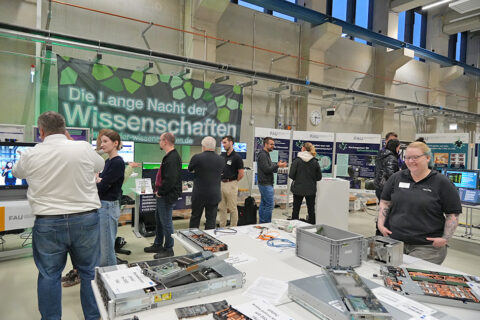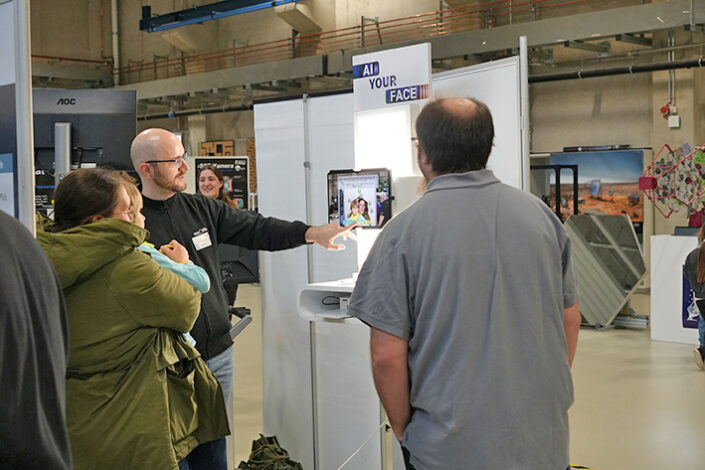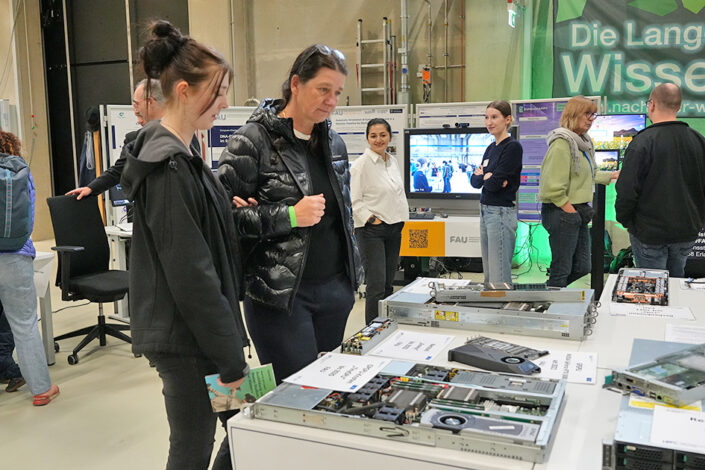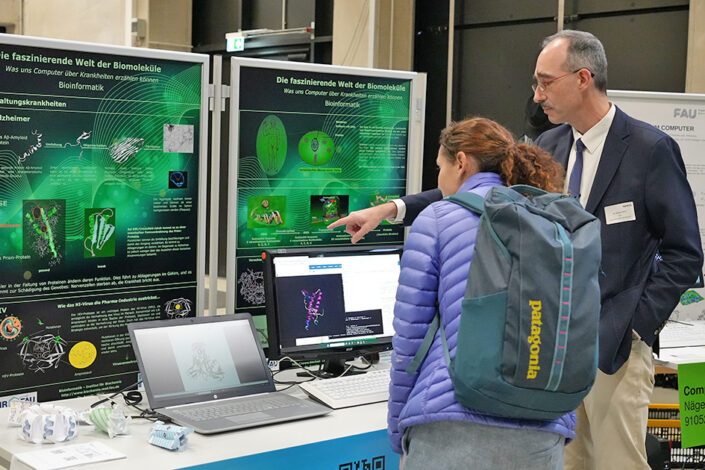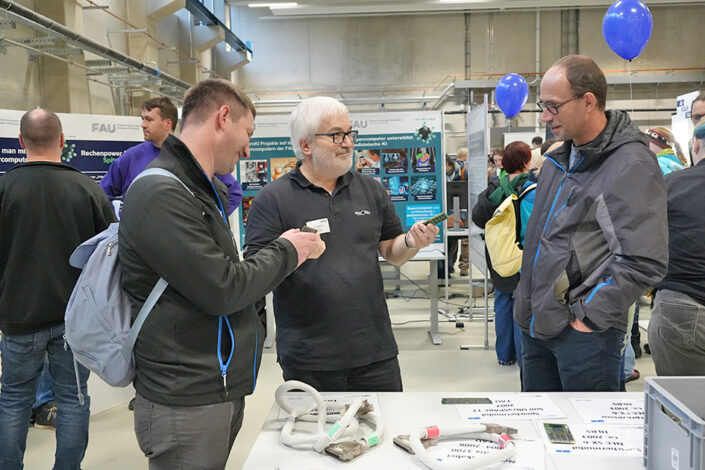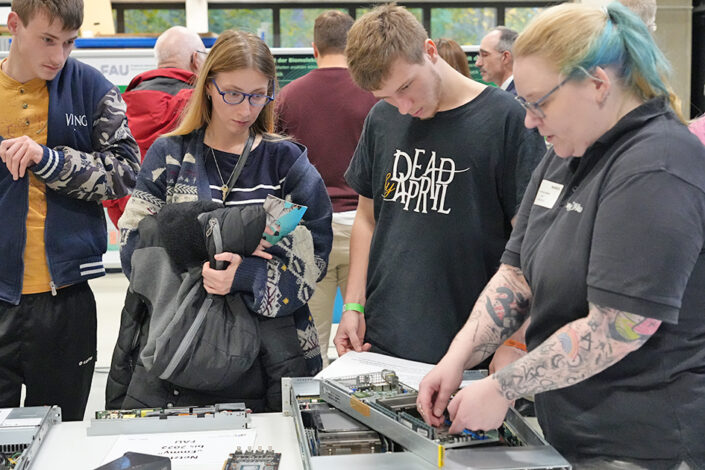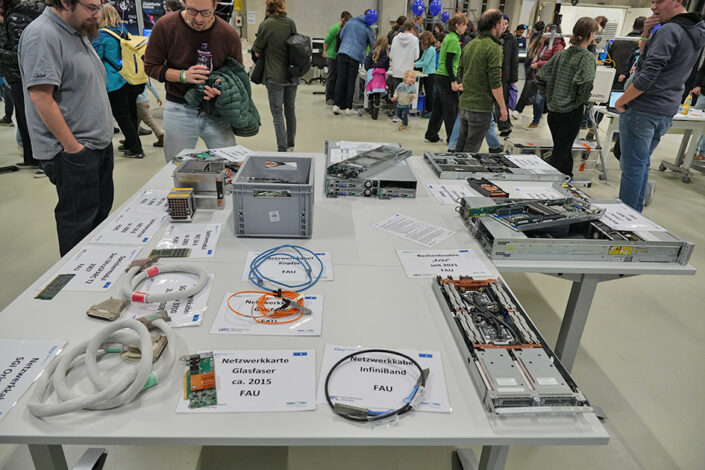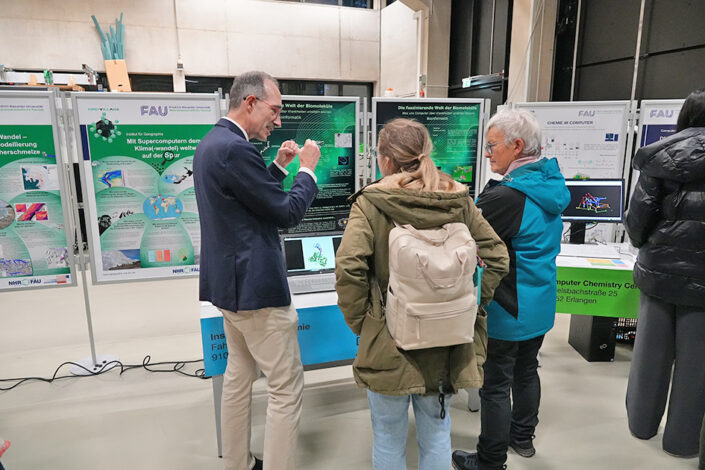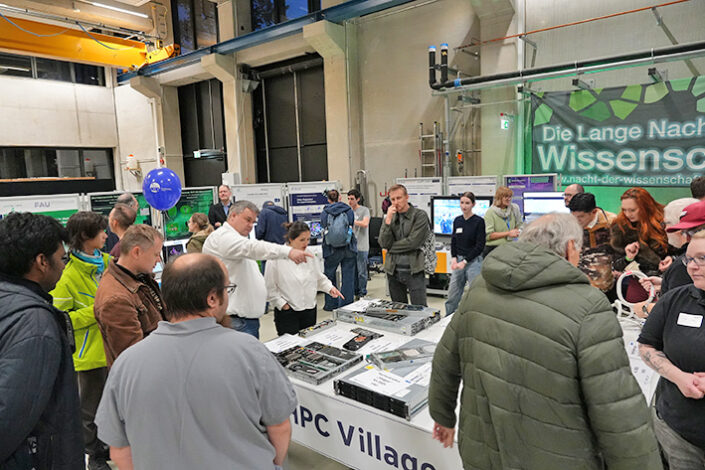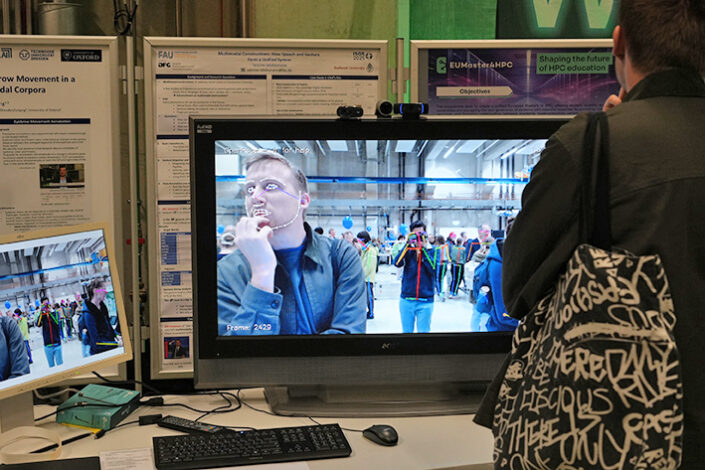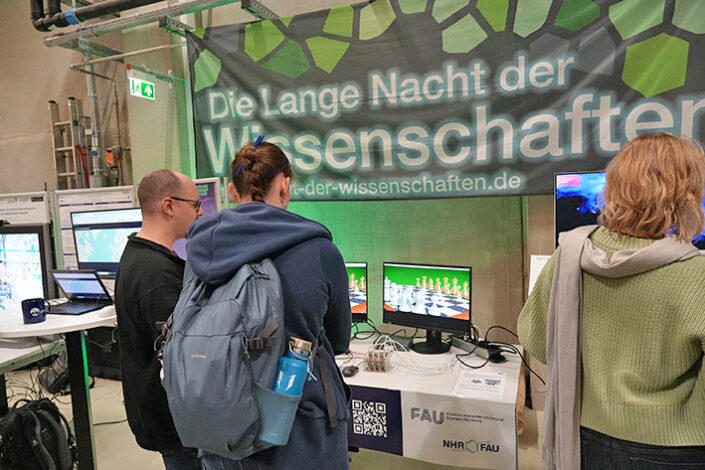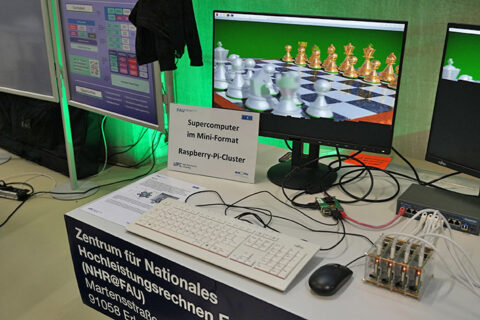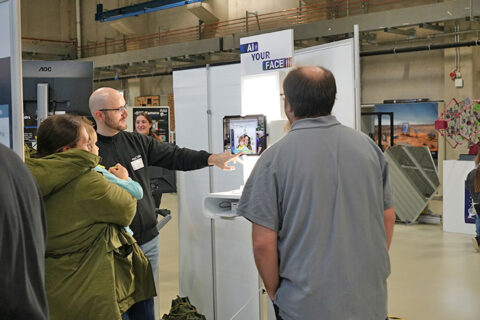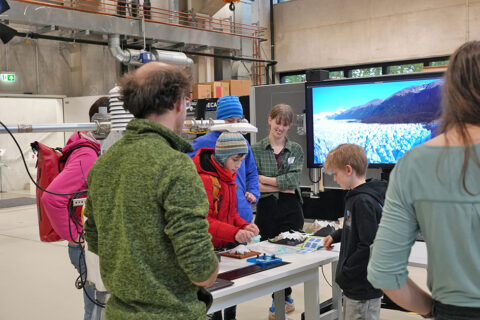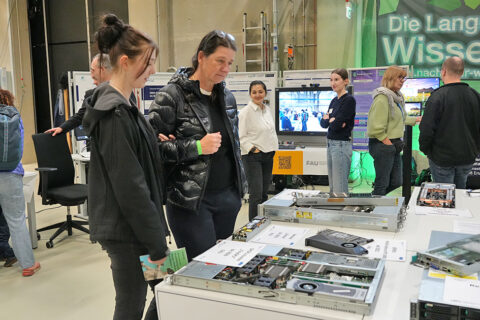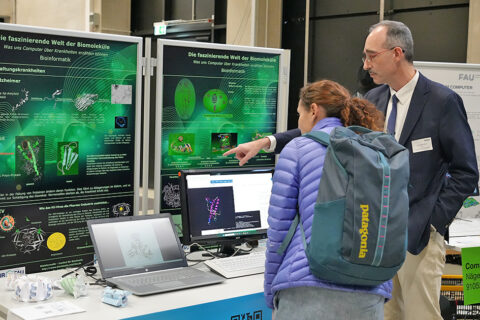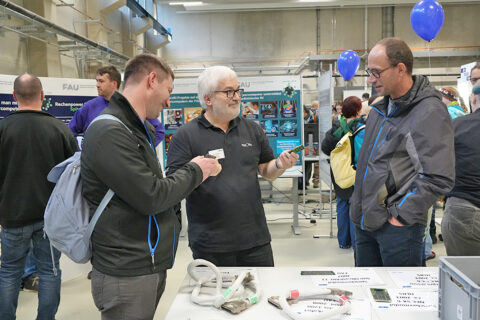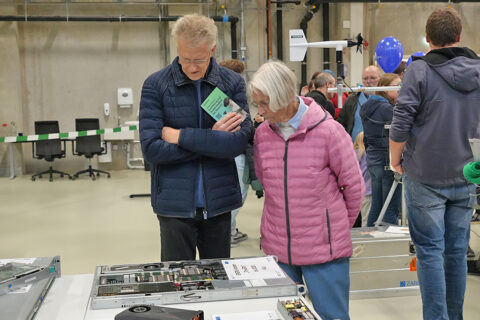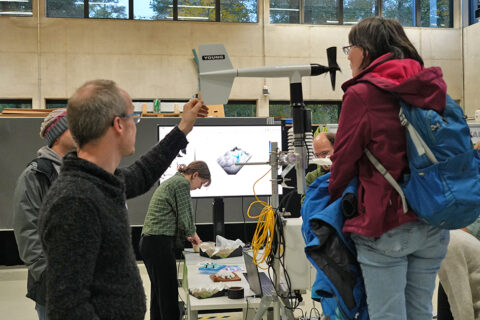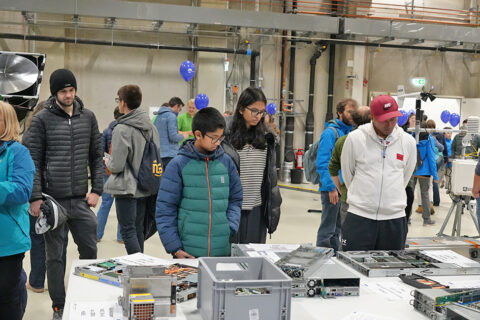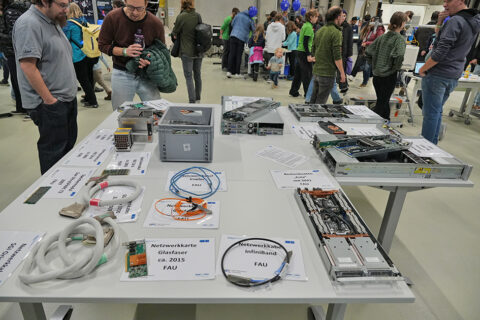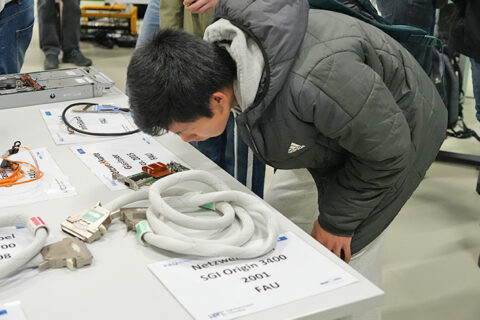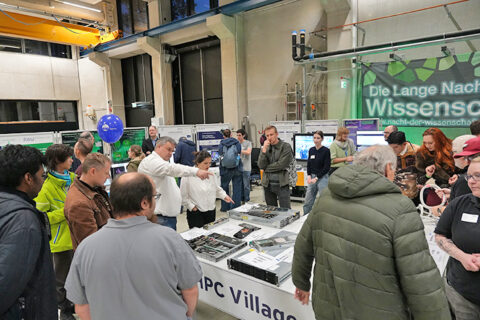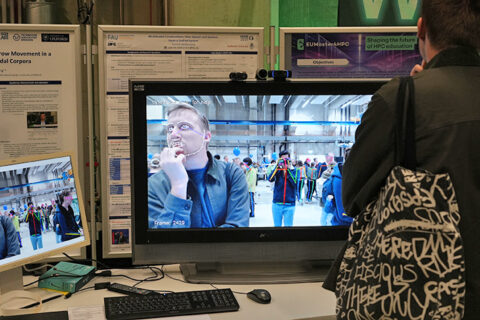LNdW 2025: HPC Village—Supercomputers at Work at ECAP
On the evening of October 25, 2025, the cities of Erlangen, Nürnberg, and Fürth sparkled with curiosity and creativity during the “Long Night of Science.” From 5 p.m. until midnight, thousands of visitors explored behind-the-scenes views of research labs, institutes, and companies across the region, immersing themselves in experiments and scientific discovery.
For the first time, the “HPC Village—Supercomputers at Work” took place at the Erlangen Centre for Astroparticle Physics (ECAP). Organized by NHR@FAU in collaboration with partner institutions, the HPC Village offered hands-on insights into the world of high-performance computing (HPC) and its diverse applications—from artificial intelligence and machine learning to atomistic simulations and program optimization.
Several booths invited visitors to engage directly with scientists and explore questions that shape our technological future:
- High-performance computing: How do you get 1,000 processors to solve a problem together? Experts explained how parallel computing enables the modeling of complex natural and technical systems.
- Linguistics: Communicating with hands and feet—can the computer understand that? Demonstrations showed how AI interprets gestures and language beyond spoken words.
- Geography: How is the climate changing in the mountains, and how are glaciers reacting—yesterday, today, and tomorrow? HPC Simulations impressively illustrated climate dynamics in alpine regions.
- Medicine: What does the dynamics of biomolecules tell us about the origin and treatment of diseases? Scientists used molecular simulations to demonstrate how HPC accelerates biomedical research and drug development.
- Chemistry: Chemistry (alchemy?) and supercomputers—how do they fit together? Computational models showed how supercomputers help decode chemical reactions at the atomic scale.
- Computer science: Handwriting imitator, tax law expert, assistant doctor—what else can AI do? Visitors explored the rapidly expanding possibilities of artificial intelligence across domains.
Visitors were encouraged to get up close with the hardware itself: Compute nodes, network cables, and many other components were on display, allowing to see what makes a supercomputer tick. Scientists explained how data flows, how cooling systems work, and how thousands of processors collaborate to solve complex problems.
Among these highlights, one attraction stood out: the AI image generator, developed and provided by the Zuse Institute Berlin (ZIB) and the NHR Alliance. This creative station invited visitors to experience the playful side of AI—by turning themselves into superheroes. All evening, young and old waited for their chance to take their turn.
As midnight approached, the HPC Village slowly wound down, leaving behind a sense of excitement and inspiration. Visitors left ECAP with a deeper understanding of how supercomputing fuels innovation across disciplines—and a few with superhero portraits to remember it by.
The Long Night of Science 2025 impressively demonstrated how inspiring the world of HPC can be. We are already excited for 2027!

